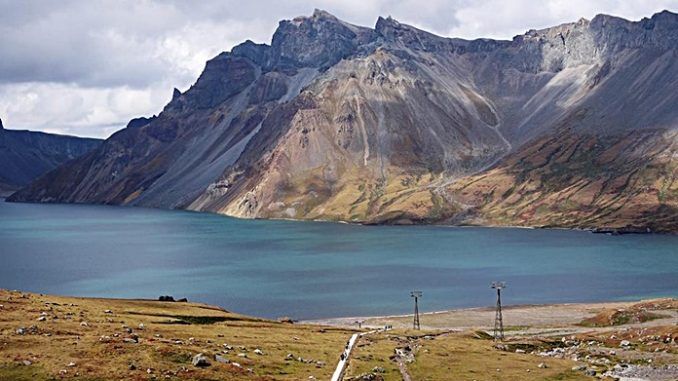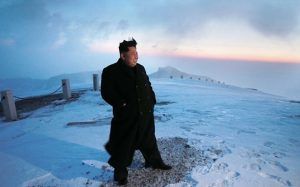
The deadly North Korean super volcano, Mount Paektu, is set to erupt and cause a global catastrophe, the likes of which would not have been seen for a thousand years.
The 9,000 feet giant volcano located on the border between North Korea and China is the highest peak of the Korean Peninsula.
Mount Paekdu is not far from a North Korean nuclear test facility where the government is conducting nuclear bomb tests.
The active volcano is responsible for one of the deadliest eruptions in human history and experts believe history is about to repeat itself.

BYPASS THE CENSORS
Sign up to get unfiltered news delivered straight to your inbox.
You can unsubscribe any time. By subscribing you agree to our Terms of Use
The Daily Express reports:
Nearby nuclear weapons testing from the Kim Jong-un regime could trigger an eruption as rumblings could upset lava beneath the surface, scientists have previously stated.
Now, new studies show that the eruption could eject far more sulphur into the atmosphere than previously thought, which could devastate life on Earth.
Mount Paektu once underwent one of the most devastating eruptions in history in 946AD when it erupted so powerfully that it formed a five kilometre caldera at its summit and produced enough ash that it even showered Japan – almost 1,100km away.
Such has been the fear around Mount Paektu that it has sparked a rare collaboration with North Korea and the West, with the largely secretive nation inviting scientists from the UK and US to help study it.
Dr James Hammond from the University of London, one of the selected few who were given access to the site, says that the devastation in the 946AD eruption was much more significant than previously thought – and history could repeat itself.
Dr Hammond’s research said: “In contrast to earlier estimates, the 946 eruption did eject large volumes – up to 45 megatons – of sulphur into the atmosphere.
“This paper shows how important it is to study volcanoes no matter where they are.
“This volcano, responsible for one of the largest eruptions on record, was thought to have minimal sulphur release.
“We suggest it could have been one of the largest on record.”
Stephen Grand, a seismologist at the University of Texas at Austin, previously said: “I think the risk of a destructive eruption here is very real.”
The team believe that the 946AD released more sulphur into the atmosphere than the 1815 eruption of Tambora, which contributed to the “year without a summer” and saw temperatures plummet worldwide.


